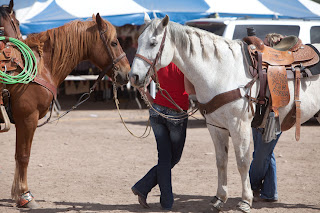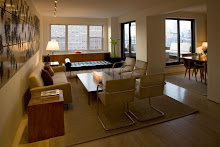My mom is 90 now and still sharp as a tack - although she is not so good with valences. A few years ago, she was the guest speaker at the American Chemical Society meeting at the University of Texas. She was a hoot, telling stories from back in the day about washing her hands with benzene and the creek behind the lab occasionally spontaneously combusting. Best to my mom - for without her good Chemistry, I would not be nearly the concoction that I turned out to be....
Career Synopsis for Virginia Z. Deal
Virginia Zerfass Deal (Mrs. Carl Hosea Deal, Jr.) “Ginney”
Born Sept. 20, 1922, Dansville, New York (up-state near
Rochester in farm country)
Education:
Dansville Schools, Duke University (BS Chemistry)
U.C. Berkeley, Diablo Valley College, Mills College.
Children: Julia
Z. (1956)
Carl H. (1958)
Milton Z. (1959)
Nicolaas R. (1964)
Hobby: breeding
Burmese cats
Ancestor Johann Adam Zerfass was born in Pennsylvania in
1742.
The family came to New York State in 1813 in a covered wagon
for the rich farmland.
Virginia played in that same wagon, still in the Zerfass
barn, as a child.
As a child, Virginia was interested in science, music and
doing pen and ink sketches. Her
parents bought her a requested chemistry set and a wonderful $3
microscope. After a few unplanned
explosions, Virginia’s chemistry was moved to the concrete basement of their
home on Zerfass Road.
Her family raised fruit trees and shrubs for the wholesale
trade, and fared relatively well during the depression years. At least, on the farm there was food to
eat.
She was graduated from High School in 1939 and continued on
there one more year as was allowed, because of the economic depression. Her last summer there was spent working
gratis in a hospital assisting at autopsies and other laboratory work.
She was accepted at Duke University in North Carolina and
entered with the help of a government loan available to science students. During this time she held a part-time
job involving analytical problems with an analysis for fluorine on an NDRC
project (The National Defense Research Committee was formed in 1940 to fund scientific
research toward the war effort).
She was Art Editor of the “Archive” (a Duke literary magazine),
president of the Pegram Chemistry Club, Staff Artist for the Zoology Dept. and
was also a member of the Phi Mu fraternity (“sorority”).
While at Duke she met her future husband, Carl Deal, who was
a North Carolinian in chemistry graduate school. She was the only one in his “Quant and Qual” class who asked
questions, he said. Her lab
notebooks were full of “why’s.”
They were given permission to “date” by Prof. Paul Gross (“Pappy”), head
of the Chemistry Department.
On April 15, 1944 they were married in the Duke Chapel. They accepted jobs with Shell
Development Co, the research labs for Shell Oil in the San Francisco Bay area
of California (sometimes referred to as “Petroleum U.”).
By now the U.S. was in WWII. Shell was in a hurry for the new chemists to arrive. When Virginia went to CA to start work,
Carl was still in graduate school in the East. Ginney went by train from Raleigh NC, changed in New
Orleans, changed in LA and again changed trains in San Francisco. She was met at the train in Oakland CA
by the personnel manager of Shell, Mrs. Elizabeth Ainsworth, who was holding up
Ginney’s wedding picture. Mrs.
Ainsworth took Virginia to her own home in Berkeley, as she thought it improper
to put a young lady in the same hotel where they put the “men” hirees. Mrs. Ainsworth became a long-time
friend and was also the sister of John Steinbeck.
Working in chemistry was very different in those days. In 1949 Virginia’s annual salary was
$4,632 with $595.20 withheld federal taxes. Carl’s annual salary was $6,036 with $813.60 federal tax
withheld. Even so, their combined
salaries were more than the salary of the company’s president. This was very different from today,
when CEO’s now may take 1000x or more of the salary of an average worker.
Virginia’s official job as a chemist was analytical research
in the fields of viscosity, molecular weights, polarography, potentiometry and
the development of test methods.
She had 4-5 lab assistants whose work she supervised. They were doing the first
potentiometric titrations.
Most of her “bench work” was applied research, working with
all sorts of concoctions that only an oil chemist could cook up; finding a
method of analysis for some compound which might be so transitory that no one
had ever had it in hand and, if necessary, designing an instrument to aid in
its analysis.
There were many semi-official tasks which added
variety. One was an assignment
outside the analytical department to compile and illustrate a manual on the
preparation and presentation of technical information. It was called “The Report Manual” and
was 3” thick when finished. It was
for the staff to use in writing their various kinds of reports and in giving
verbal presentations.
She and her husband designed and constructed an ACS
(American Chemical Society) exhibit for the California State Fair
(Subject: Chemistry in
Agriculture) which was awarded a gold plaque as the outstanding educational
exhibit.
She was requested to design pages for a Shell “Safety
Calendar” in which each month showed many safety violations – game: find the
violations.
She made many cartoon posters to facilitate the sale of War
Bonds during WWII.
She illustrated many a farewell card for departing friends
and decorated service anniversary cakes.
When she first came to Shell, the Physical Chemistry
Department was making penicillin in the “The High Lab” (this was a multi-story
room for accommodating very tall distillation columns). Cutter Laboratories were just around
the corner, and Shell was doing the first pilot plant development for mass penicillin
production. That was one of the
first things Virginia worked on.
The only other women in her department were lab assistants
and office help. There was only
one other female chemist in the whole company, Eleanor Mitts, in the Organic
Department.
Virginia was featured in the “Women at Work” section of the
Petroleum Engineer Magazine in 1954.
She was a California nominee for “Oil Woman of the Year” (Desk &
Derrick Club) and she was the first woman to give a paper before the API
(American Petroleum Institute) in the West – and only the second in all API
history.
Virginia enjoyed her association with the ACS, especially
the California Section, which always met at U.C. Berkeley. She once sat beside Linus Pauling at a dinner
meeting where he was to be the speaker.
There were many interesting people and names around in those days that
made marks in history. The Deals
would often picnic in the Berkeley hills with George Pimentel and his wife in
the ‘40’s. Carl knew Robert
Oppenheimer, and was friends with Dave Packard, before his name became forever hitched
to Bill Hewlett. Carl’s first
“office mate” was Al Nixon, who later became President of the ACS. There was a Shell Research Club which
was an affiliate of Sigma Xi: this group had regular meetings with splendid
speakers.
When the war ended, Virginia had several PhD’s as underlings
(back from the war). They worked
together very well, and were good friends. It was thirty years later before Ginney learned how much
these men resented coming back from war to work for a “woman.”
Some of the (now) funny things that happened in the lab
those days were: people using the
lab ovens (meant for lab samples) to bake potatoes, lab assistants snuffing out
cigarettes in acetone, sinks equipped with benzene for washing hands and people
not often wearing goggles or gloves.
At the sink in the analytical lab was a big vat of hot
chromic acid for cleaning glassware, and stored beside it the glass cover. Next to this were three cans of
solvents: acetone, MEK and benzene.
These had a pinch clamp on a spout of tubing which dribbled into the
sink and out into Emeryville Creek and into the Bay. Every 2-3 weeks the creek would catch fire and one time it
burned down the railroad trestle!
When Virginia was about two months from giving birth to her
first child she was “released” to give birth and to return whenever she
wanted. Well, she did in fact
return at the age of 66 to the relocated Westhollow Research Center in
Houston. But times had changed. They refused to hire her as an
employee, but used her as a “temp” through Kelly temporary services. In this way they avoided any benefits
and prevented her the few remaining years of service needed to earn her
pension. When her husband Carl
died three years later, she lost all pension benefits.
This is another big difference today in that big companies
no longer “care” much about employees.
There was a time when people had real loyalty to their company, and the
company would take care of its people – but seldom any more.
Late in life Virginia went back to work at the Westhollow
Research labs library in Houston.
She did things for them which usually never got done, because they
needed a chemical background, some technical know how and computer skills. She put their 1500 periodicals into a
very fancy database, set up the library CD-ROM system, and provided
instructions for the library staff and chemists for how to use it.
Two of the papers Virginia co-authored were:
Determination
of Basic Nitrogen in Oils
V.Z.Deal,
F.T.Weiss and Theodore T. White
Analytical
Chemistry 25 426 (March 1953)
Potentiometric
Titration of Very Weak Acids
Virginia
Z. Deal and Garrard E.A. Wyld
Analytical
Chemistry 27 47 (January 1955)
Virginia’s career in science came at an extraordinary time
and place. The post-war years
carried the momentum of war-driven efforts toward peace-time objectives. The San Francisco bay area was a
western crucible for science, with U.C. Berkeley, Stanford University, the
Lawrence labs and a host of emerging industries closely aligned. The atmosphere was positive and
ambitious, and R&D efforts looked forward beyond the horizon. Shell Development Co. had the culture of
an extended family, and the president of the company knew the face of every
employee. Social gatherings and
company outings were common, and there was a real sense of camaraderie in the
workplace.
Her interest in science began with a chemistry set, a
microscope, and some unplanned explosions. She pursued this interest through college, and launched into
her career as a woman, by filling the void of absent soldiers. Her first project was the penicillin
pilot plant in support of those soldiers, some of whom later made it home to
work under her at Shell. Today
there aren’t those barriers to “women in science” which Ginney launched through
long ago, but there are still chemistry sets and microscopes.

















































































